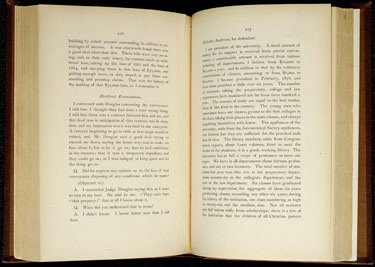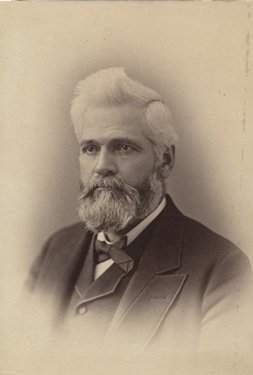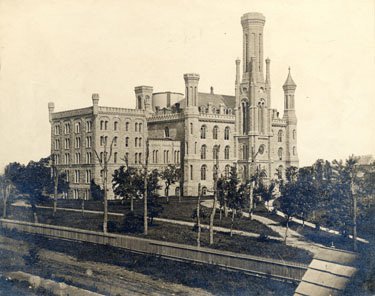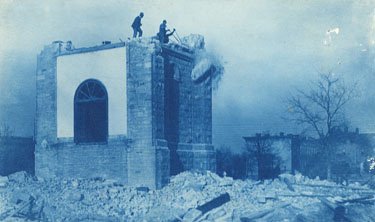The Myth of Openness
Founded in 1857 at 35th St. and Cottage Grove by Baptists associated with Chicago's First Baptist Church, the original or Old University of Chicago never achieved a stable financial footing. Despite the aggressive efforts of its fifth and second-to-last president, Mr. Galusha Anderson, to raise money from philanthropists like John D. Rockefeller and Leland Stanford, the fledgling university found itself facing foreclosure in 1884.
Its history and financial straits are captured in great detail in the court testimony from the foreclosure proceedings. This document provides one of the only formal statements about the university's early policy with respect to women and African Americans.
Creating a myth that the university had always been open with respect to gender and race, President Anderson testified thus:
I am president of the university. . . I became president in February, 1878, and have been president a little over six years. The number of students, taking the preparatory, college, and law department, have numbered not far from three hundred a year...Not all students pay full tuition aside from scholarships; there is a law of the institution that the children of all Christian pastors shall be educated at half price, without respect to denomination. There has never been any distinction as to sex, nationality or religious belief, or political belief. We educate both sexes on the same footing precisely, and illustrate constantly the fifteenth amendment of the constitution of the United States as to color. Students come from all families, or any religious belief, or no religious belief.

Old University of Chicago Records
This document records the testimony of University of Chicago President Galusha Anderson in the 1884 foreclosure proceedings against the old University.

Undated
University of Chicago Photographic Archive
Anderson was born in 1832 and trained at Rochester Theological Seminary. He served as pastor of Second Baptist Church in St. Louis from 1858-1866 and of Second Baptist in Chicago from 1876 to 1878 when he became fifth president of the University of Chicago. He left the old University when it closed in 1886 but in 1892 returned to the new University as professor in the Divinity School, from which he retired in 1904. He died in 1918.

Undated
University of Chicago Photographic Archive
The Old University of Chicago was located on the west side of Cottage Grove Avenue, north of 35th Street.

1890
University of Chicago Photographic Archive
The buildings of the Old University of Chicago were demolished in 1890 after the school had closed. A stone from Douglas Hall can be found today in the wall of the archway between Wieboldt and Classics on the new campus.
